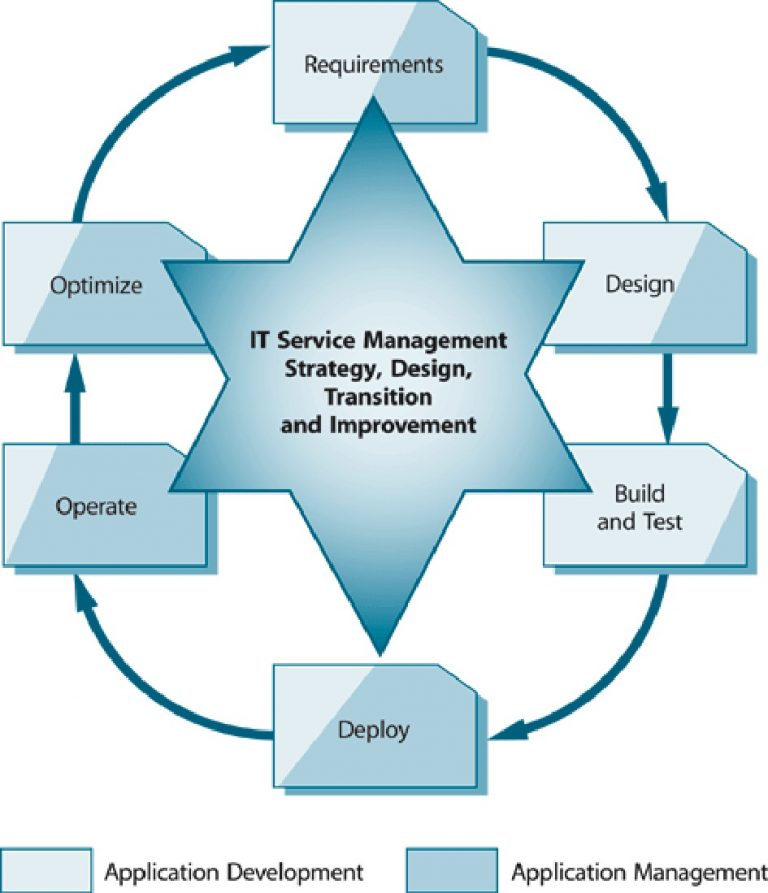Application Management Organisation
Application Management Overview

Although all Application Management departments, groups, or teams perform similar activities, each application or set of applications has its own distinct management and operational requirements. Key differences include:
- The purpose of the application:
Each application is developed to fulfil specific objectives, usually aligned with business goals. For effective support and improvement, the team managing the application needs a thorough understanding of the business context and how the application helps achieve these objectives. This is often facilitated by a Business Analyst, who is responsible for ensuring that business requirements are accurately translated into application specifications. Business Analysts should ensure that business requirements are converted into both functional and manageability specifications. - The functionality of the application:
Applications are designed to operate in different ways, performing various functions at different times. - The platform on which the application runs:
While the platform is typically managed by a Technical Management team, each platform influences how the application needs to be managed and operated. - The type or brand of technology used:
Even applications with similar functionality can behave differently depending on the database or platform they run on. Understanding these differences is crucial for effective management. Although the activities required to manage applications are generic, the specific schedule and execution of these tasks will vary. For this reason, Application Management teams are often organised by the types of applications they support.
Examples of Application Management teams include:
- Financial applications: Larger organisations may have several teams managing different aspects of Financial Management, e.g. Debtors and Creditors, Age Analysis, General Ledger.
- Messaging and collaboration applications
- HR applications
- Manufacturing support applications
- Salesforce automation
- Sales order processing applications
- Call Centre and marketing applications
- Business-specific applications (e.g., healthcare, insurance, banking)
- IT applications (e.g., Service Desk, Enterprise System Management)
- Web Portals
- Online Shopping
Traditionally, Application Development and Management teams have operated as autonomous units, each managing its own environment with separate interfaces to the business. However, recent trends towards object-oriented and SOA (Service-Oriented Architecture) approaches, alongside increasing pressure from businesses to be more responsive, have led to a greater integration between the two functions.
This means Application Development teams are becoming more accountable for the successful operation of the applications they design, while Application Management teams are playing a more significant role in the development of these applications. Although the core responsibilities of each group remain unchanged, there is a growing need for a more integrated approach to the Software Lifecycle (SLC). This trend will also lead to greater commoditisation of Application Development output and increased involvement of Application Management in development projects.
To accommodate this shift, the following changes will be required:
- A single interface to the business:
All stages of the lifecycle should have a unified interface, with common requirements and specification-setting processes. - Changes in performance metrics:
Development teams should be held accountable for design flaws that cause operational outages, while Management teams should be involved in shaping the technical architecture and manageability of applications. - A unified Change Management process:
Both groups should follow a single Change Management process, with overall authority vested in the Change Management team. - A clear mapping of Development and Management activities:
The interaction between the two should be clearly defined within the lifecycle, with general guidelines provided in ITIL publications. Greater emphasis should be placed on integrating functionality and manageability requirements early in the project lifecycle.

Figure 1 illustrates a common Application Management Lifecycle, showing how both groups collaborate. In some phases, Application Development will take the lead with input from Application Management, while in other phases, the roles will be reversed. Both groups will operate in alignment with the IT Service Strategy of the organisation, coordinated through Service Transition mechanisms and processes.
